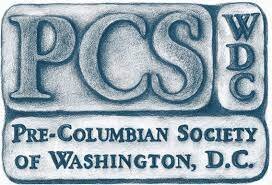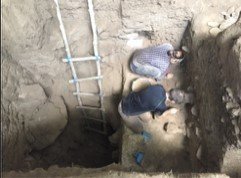The archaeological site of Tibes in southern Puerto Rico, is to date the earliest ceremonial center in the Caribbean. It consists of nine stone structures and includes a variety of archaeological deposits. The information at hand suggests that the site began as a village around AD 500 and it acted as a ceremonial center from AD 900 to 1250, when it was abandoned. Traditionally, this shift has been interpreted by scholars as evidence of the development of social stratification. However, evidence obtained by the current project questions this interpretation. This lecture presents and discusses this evidence in some detail and proposes a new perspective on the social history of the island..
L. Antonio Curet is a Curator of the National Museum of the American Indian. He was born in Hato Rey, Puerto Rico in 1960 and attended the University of Puerto Rico, Rio Piedras where he obtained his B.A. and M.A. in Chemistry. Curet received his Ph.D. in 1992 from Arizona State University. He was part of the faculty at Gettysburg College (1993-1996) and University of Colorado at Denver (1996-2000). From 2000 to 2013 he was Curator at the Field Museum and Adjunct Professor at the University of Illinois at Chicago, Northwestern University, University of Chicago, and DePaul University. His research focuses on cultural and social change in the Ancient Caribbean, but he has participated also in archaeological projects in Arizona, Puerto Rico, and Veracruz, Mexico. He has directed several projects including Excavations at La Gallera, Ceiba, Puerto Rico and the Archaeological Project of the Valley of Maunabo. Since 1995 he has been conducting excavations at the Ceremonial Center of Tibes, Ponce, Puerto Rico and in 2013 began co-directing a regional project in the Valley of Añasco in Western Puerto Rico. Curet has published multiple articles in national and international journals, a book on Caribbean paleodemography, and has edited volumes on Cuban Archaeology, the archaeology of Tibes, Puerto Rico, and long-distance interaction in the Caribbean. He is also in the editorial boards of the Journal for Caribbean Archaeology, Revista Arqueológica del Area Intermedia, and Latin American Antiquity, Antípoda (Universidad de los Andes, Colombia) and is the editor of the Caribbean Archaeology and Ethnohistory Book Series of the University of Alabama Press.
The September monthly lecture will be hosted the second Friday instead of the usual first Friday this month. The talk will be given in person as well as virtually. The meeting will be held in the lecture theatre of the Charles Sumner School Museum and Archives, located at M and 17th Streets, NW, Washington, D.C. Photo ID is required to enter the building. Doors to the in-person meeting will open around 6:30 PM and light refreshments will be available before the lecture.
For those of you who cannot make it to the Sumner School in person, the lecture will be live streamed via Zoom but you must pre-register to attend virtually. Click HERE to register.
All monthly lecture meetings of the Pre-Columbian Society are free and open to the public.


































